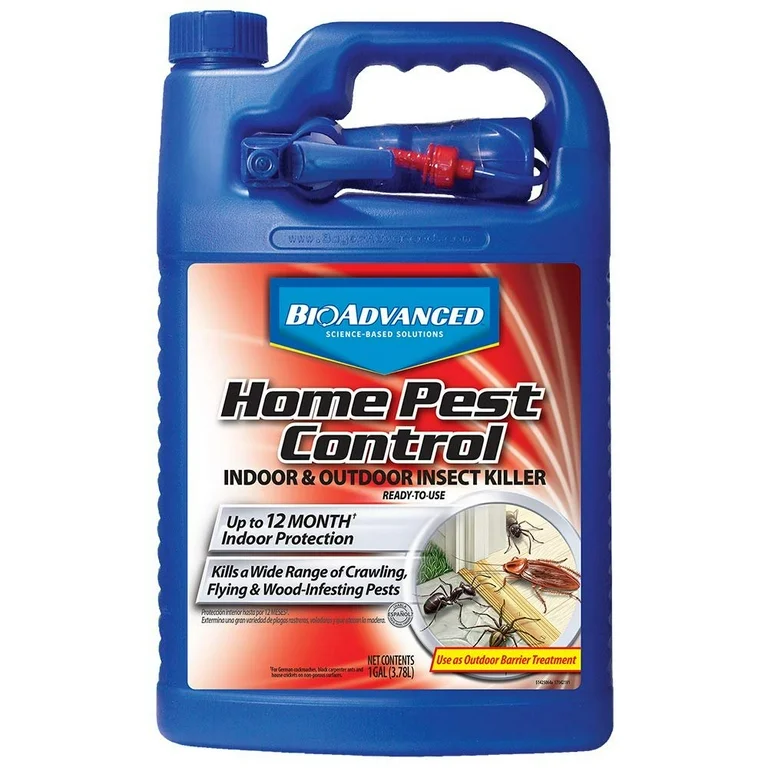Experienced A1 Exterminators Charlotte NC - Rapid and Trusted Solutions
Experienced A1 Exterminators Charlotte NC - Rapid and Trusted Solutions
Blog Article
Bed Pest Treatment Breakdown: Contrasting Chemical Vs. Non-Chemical Solutions
In the realm of insect control, specifically when handling the consistent problem of bed insects, the selection in between chemical and non-chemical treatment remedies can be a pivotal one. Both methods use distinctive advantages and drawbacks, influencing aspects such as effectiveness, safety considerations, and general price. By checking out the nuanced information of each approach, a more clear understanding of which path to go after in addressing a bed bug invasion can be attained.
Performance of Chemical Therapies
Chemical therapies for bed pest problems have been commonly identified for their quick and powerful efficiency in getting rid of these bugs. When considering the effectiveness of chemical treatments, it is important to understand that they can supply a quick and comprehensive remedy to a bed insect issue.
Additionally, chemical therapies have the benefit of using residual impacts, implying that they can proceed to eliminate bed pests even after the preliminary application. This residual action is specifically advantageous in combating any type of possible re-infestations. Furthermore, the quick activity of chemical therapies can bring alleviation to people dealing with serious bed pest problems, enabling them to regain control of their living rooms rapidly.
Safety Worry About Chemical Solutions
One critical facet that requires cautious consideration when utilizing chemical remedies for bed insect therapy is ensuring the safety of passengers and the atmosphere. Exposure to certain chemicals made use of in bed pest therapies can lead to respiratory system concerns, skin irritation, or various other unfavorable reactions, specifically in individuals with pre-existing conditions or sensitivities.
Furthermore, the environmental impact of chemical solutions is one more substantial factor to consider. Some pesticides made use of in bed insect treatments might be dangerous to advantageous pests, wild animals, and communities if they leach into the soil or water supply. It is important to use chemical treatments carefully, following security guidelines, and considering much less harmful alternatives to reduce these threats and guarantee the effective and secure management of bed bug problems.
Benefits of Non-Chemical Strategies
Thinking about the prospective safety worries and environmental influence associated with chemical solutions for bed pest treatment, discovering non-chemical methods presents an appealing alternative with several distinct advantages. Non-chemical therapies are eco friendly, as they do not contribute to air or water contamination, making them a sustainable selection for parasite control.
In addition, non-chemical remedies can be effective in targeting bed insects, including hard-to-reach areas where chemical therapies might not penetrate - A1 bed bug exterminator charlotte. Techniques such as heat treatment, vacuuming, heavy steam cleansing, and bed mattress encasements offer thorough elimination without the usage of dangerous chemicals.
Limitations of Non-Chemical Treatments

Additionally, non-chemical treatments typically need numerous applications to achieve successful obliteration. This can be time-consuming and may not constantly assure complete removal of all bed bugs and their eggs, particularly in hard-to-reach or surprise places.
Furthermore, the success of non-chemical treatments heavily depends on appropriate application and thoroughness, which can be testing for individuals without expert competence. Inadequate application of non-chemical link approaches might cause insufficient obliteration, causing persistent infestations and the demand for additional therapies.
For that reason, while non-chemical therapies have their benefits, it is important to recognize these constraints and consider them when figuring out one of the most reliable strategy for handling bed insect invasions.
Price Contrast: Chemical Vs. Non-Chemical Options
Offered the constraints linked with non-chemical therapies, an important element to examine in the context of bed bug monitoring is the expense contrast between chemical and non-chemical alternatives. Chemical therapies commonly include the application of pesticides by professionals, which can vary from $250 to $900 per area, depending on the seriousness of the infestation and the dimension of the location to be treated. In contrast, non-chemical treatments like heat treatment or vapor can be much more expensive, with expenses ranging from $1,000 to $6,000 for an entire home. While the initial price of chemical therapies may appear reduced, multiple treatments may be required to totally eliminate the problem, potentially increasing the total expense. On the other hand, non-chemical options might offer an extra lasting and green option, although they can be cost-prohibitive for some people. Ultimately, when considering the expense of bed bug treatment options, it is vital to consider the in advance expenditures against the efficiency and lasting sustainability of the chosen method.
Final Thought

Thinking about the possible safety and security concerns and environmental effect associated with chemical options for bed pest treatment, discovering non-chemical methods offers an appealing alternative with several distinctive advantages.Offered the constraints associated with non-chemical therapies, an important element to review in visit the site the context of bed bug monitoring is the price comparison between chemical and non-chemical options. In contrast, non-chemical therapies like heat treatment or heavy steam can be more expensive, with expenses varying from $1,000 to $6,000 for an entire check out this site home. While the preliminary expense of chemical treatments may seem lower, several therapies might be needed to totally eliminate the problem, potentially enhancing the general expense.In verdict, when contrasting chemical and non-chemical bed bug therapy options, it is vital to take into consideration performance, security, benefits, constraints, and cost.
Report this page